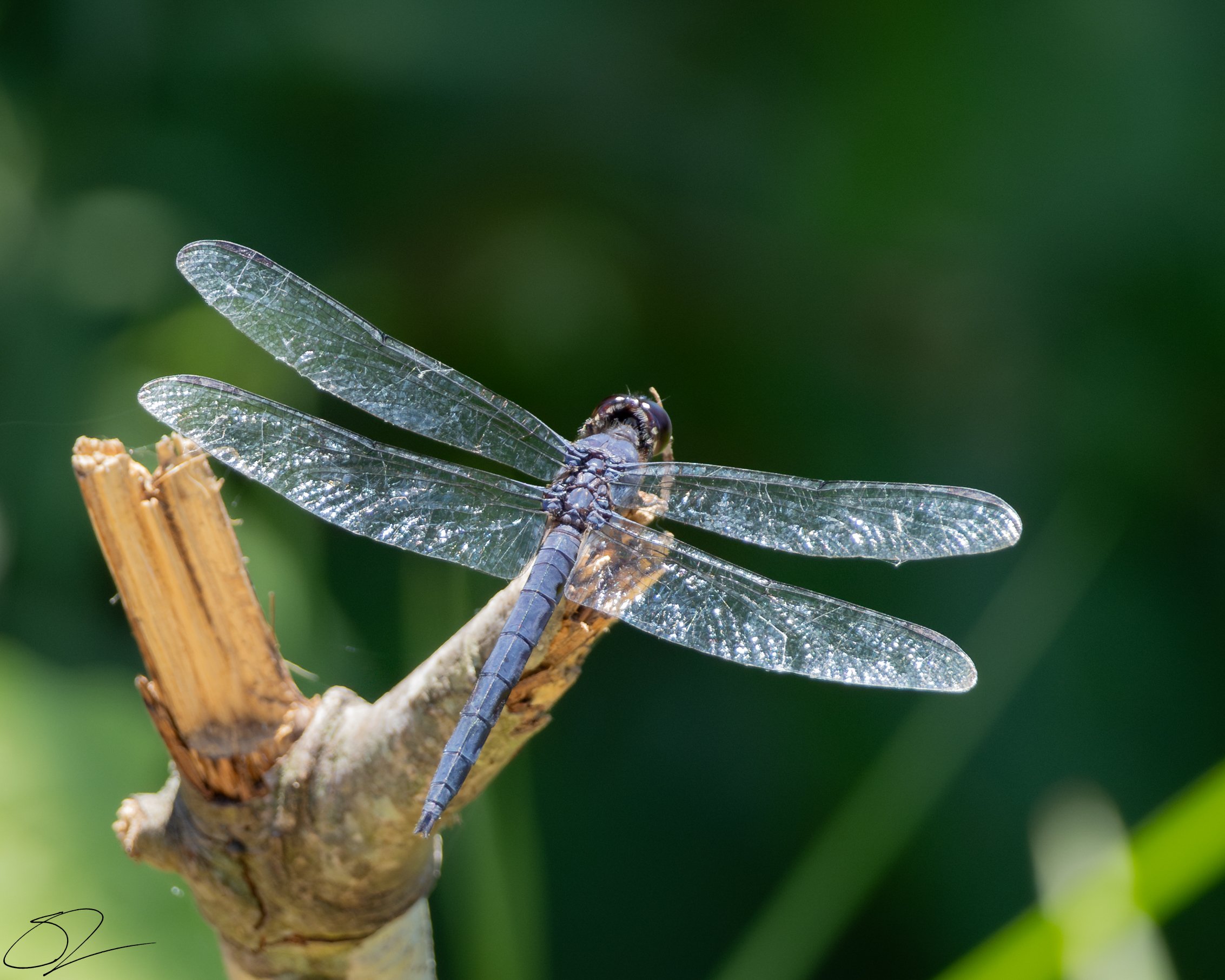
Arkansas Insects
Different insect and Arachnid species from the Natural State. As I add them I will place additional information along with the image.
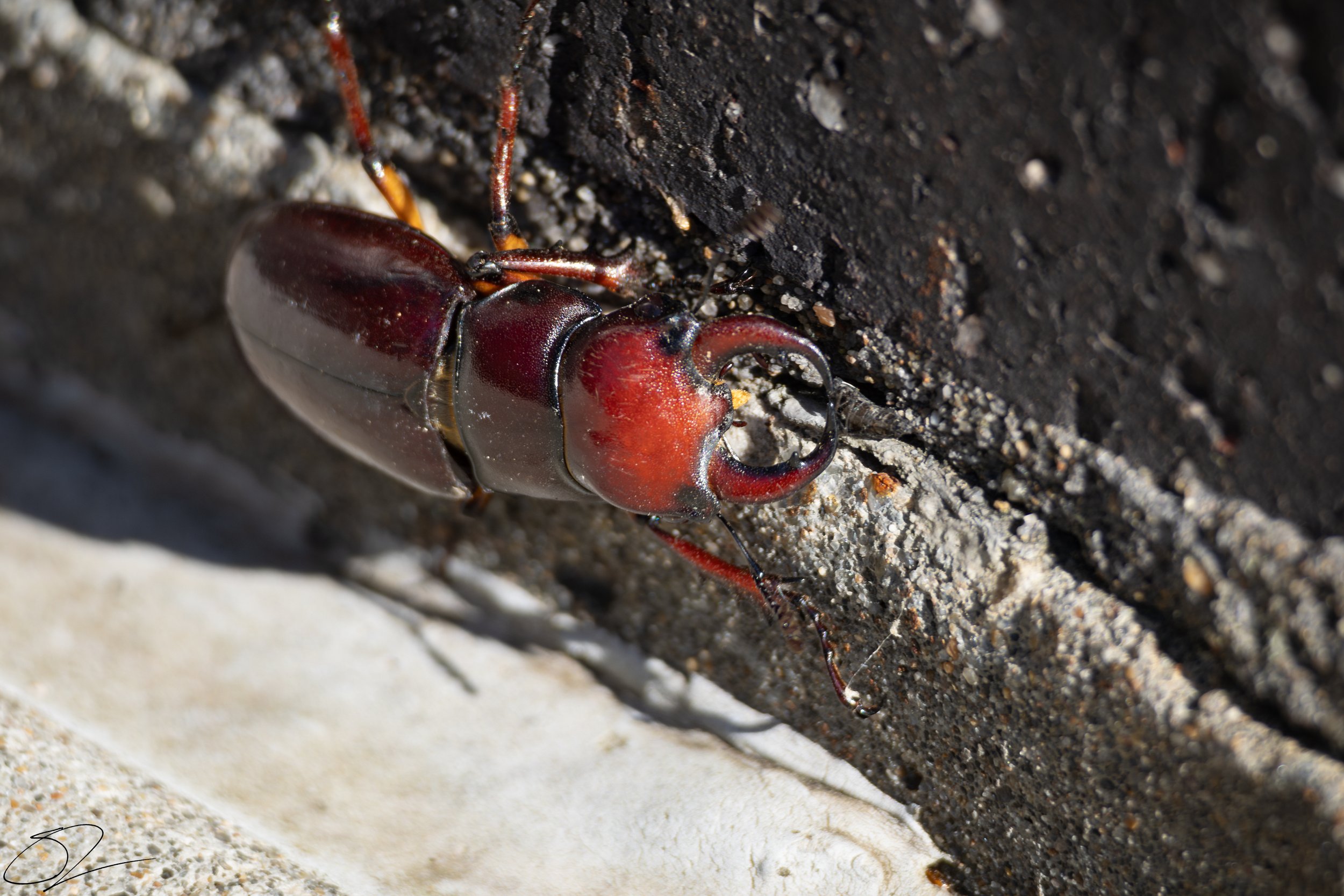
Reddish-Brown Stag Beetle ~ The mandibles on the male are generally reserved for male-to-male combat when it comes time to woo a female Stag Beetle. Among males, younger males have shorter mandibles than older ones. The mandibles on the female are much shorter than that of the male. Its exoskeleton appears smooth and glossy and has a rich dark red or brown hue to it. This species is different from other Stag Beetles thanks in part to the orange or yellow coloring at the base of each leg.

Imperial Moth ~ The Imperial Moth stands out and can't be confused with another. Yellow with spots and speckles of orange, brown, or even pink. Their caterpillar form is large with 4 prominent spikes on the head.

Katydid ~ The Katydid is a green, leaf-like insect belonging to the family Tettigoniidae, known for its excellent camouflage. Found in forests, grasslands, and gardens worldwide, katydids are mostly nocturnal and recognized for their distinctive, rhythmic chirping produced by rubbing their wings together. They typically measure 1-2 inches in length and feed on leaves, flowers, and sometimes small insects. Katydids play a vital role in ecosystems as both herbivores and prey for birds and other predators. Their unique appearance and sound make them a fascinating part of the natural world.
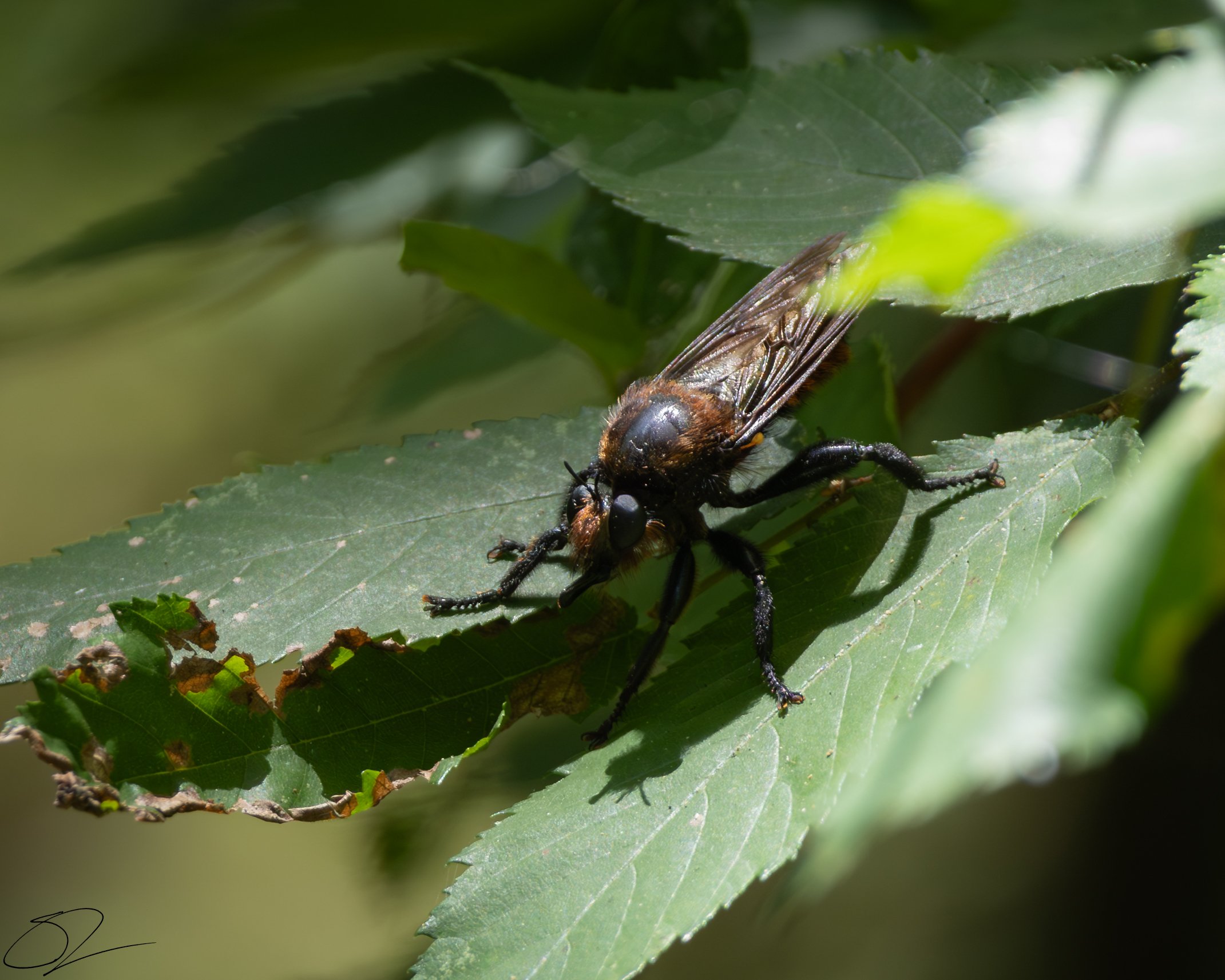
Bumble Bee Robber Fly ~ The Bumble Bee Robber Fly is a predatory insect that mimics bumblebees in appearance but belongs to the robber fly family (Asilidae). It has a fuzzy, yellow-and-black body, aiding in its disguise while hunting other insects in forests, meadows, and gardens. Unlike bees, it does not collect pollen but instead captures prey mid-air using its strong legs and piercing mouthparts. These flies play a vital role in controlling insect populations and are known for their swift flight and ambush hunting tactics. Their mimicry helps them avoid predators while being effective aerial hunters.

Giant Stag Beetle ~ one of the largest beetles in North America, known for its impressive size and the large, antler-like mandibles of the males. These mandibles are used for combat with other males during mating season. Ranging from 1 to 3 inches in length, they have dark brown to black bodies with a glossy exoskeleton. Found in forests and wooded areas, they primarily feed on tree sap and decaying wood as larvae, while adults consume minimal food. Despite their intimidating appearance, they are harmless to humans and play an essential role in breaking down decomposing wood in their ecosystems.
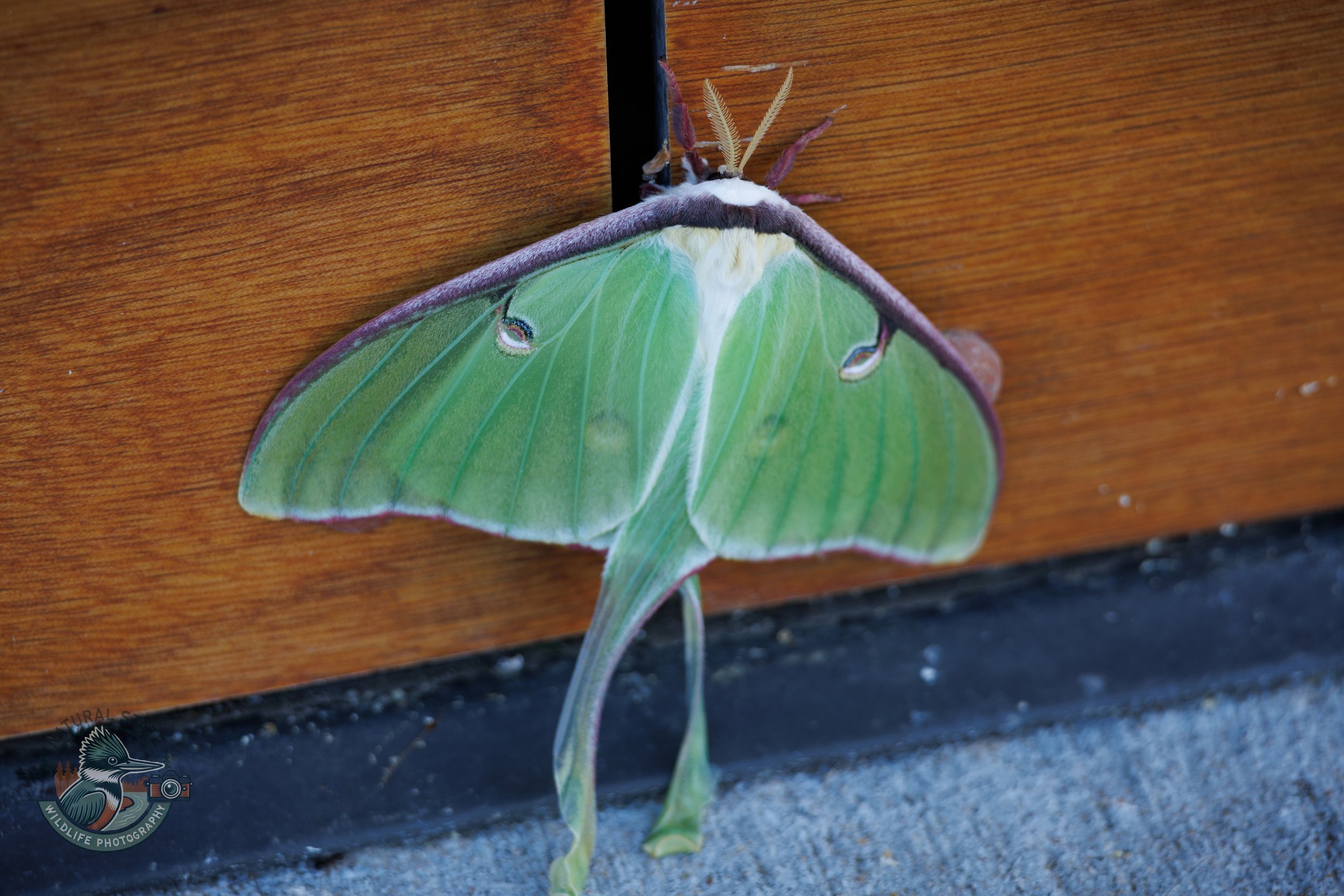
Luna Moth ~ (Actias luna) is one of North America's most striking and beloved moths, known for its large size and pale green, moon-like wings with long trailing tails. Adults have a wingspan of up to 4.5 inches and feature eyespots on each wing that help deter predators. Luna Moths are mostly nocturnal and are attracted to light. As adults, they do not eat and live only about a week—just long enough to mate and lay eggs. Their larvae, or caterpillars, feed on a variety of tree leaves, including hickory, walnut, and sweetgum. Their beauty and short adult lifespan make them a rare and magical sight.
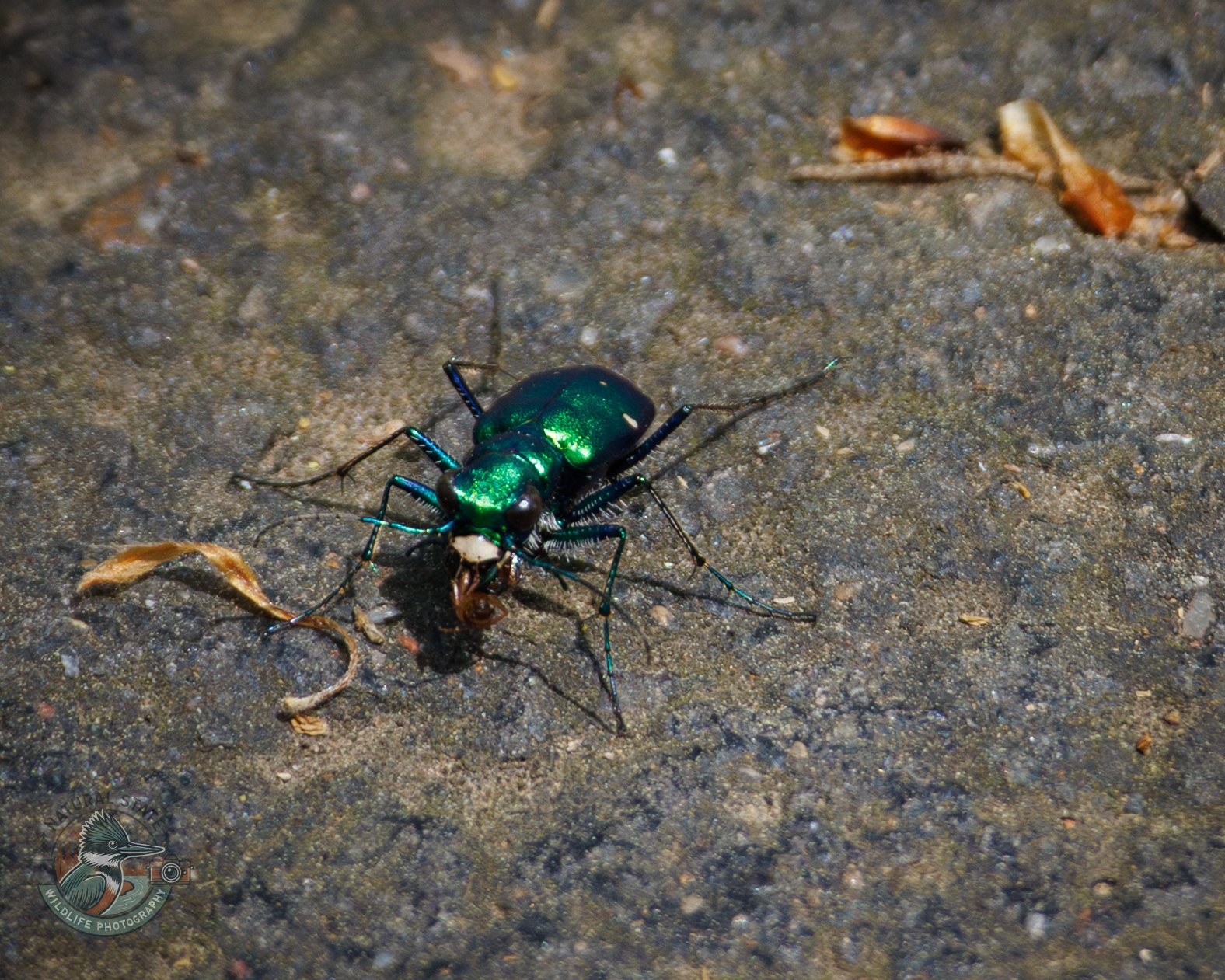
Six-spotted Tiger Beetle ~ (Cicindela sexguttata) is a small, fast-moving beetle known for its vibrant metallic green body and aggressive predatory behavior. Typically found along forest paths, trails, and sunny clearings in eastern North America, it gets its name from the six tiny white spots often (but not always) visible on its wing covers. These beetles are agile hunters, preying on small insects and arthropods, using their strong jaws to capture and consume their prey. They are also swift runners and capable fliers, often darting away when approached. Their striking appearance and speed make them a favorite among insect enthusiasts and naturalists.

Diana Fritillary ~ (Speyeria diana) is a striking and rare butterfly native to the southeastern United States, particularly the Ozark and Appalachian regions. Notable for its strong sexual dimorphism, males are a bright orange with black borders, while females are a deep blue-black with blue or white spots—one of the few North American butterflies where females are more vividly colored. Diana Fritillaries inhabit moist woodlands and forest edges, where the caterpillars feed on violet plants. Adults feed on nectar from flowers such as milkweed and thistle. Due to habitat loss, this beautiful species is considered vulnerable in some parts of its range.

Pearl Crescent ~ (Phyciodes tharos) is a small, widespread butterfly found throughout North America, commonly seen in open fields, meadows, roadsides, and gardens. It features orange wings patterned with black spots and borders, with a checkered underside that helps distinguish it from similar species. Males and females can differ slightly in pattern intensity. Pearl Crescents are active from spring through fall, often seen fluttering close to the ground. Their caterpillars feed primarily on asters, and adults feed on nectar from a variety of flowers. Hardy and adaptable, this cheerful butterfly is a familiar sight in sunny, grassy habitats.

North American Wheel Bug ~ (Arilus cristatus) is a large, intimidating-looking insect and a member of the assassin bug family, known for the prominent, gear-shaped “wheel” on its thorax. Found across the eastern United States, it is a beneficial predator in gardens and forests, feeding on a variety of pest insects like caterpillars and beetles. Wheel Bugs use their sharp, beak-like mouthparts to pierce and inject digestive enzymes into their prey, then suck out the liquefied insides. Though slow-moving, they can deliver a painful bite if handled. Their distinctive appearance and valuable role in natural pest control make them a fascinating insect to observe.

Black Swallowtail ~ (Papilio polyxenes) is a striking and widespread butterfly found throughout much of North America. Males are mostly black with yellow spots forming bands across the wings, while females can be more bluish with softer yellow markings, mimicking the toxic Pipevine Swallowtail for protection. Both sexes have distinctive red and blue spots near the tail. The caterpillars, often called parsley worms, feed on plants in the carrot family, including parsley, dill, and fennel. Adults are frequent visitors to flower gardens, feeding on nectar from a variety of blooms. Their bold coloring and fluttering flight make them a favorite among butterfly watchers and gardeners alike.

Question Mark Butterfly ~ (Polygonia interrogationis) is a medium-sized North American butterfly named for the small, silver, comma-and-dot marking on the underside of its hindwing, resembling a question mark. Its wings are orange with black spots and jagged edges, with the undersides resembling dead leaves—providing excellent camouflage. Found in woodlands, parks, and gardens, it’s active from spring through fall. This butterfly is highly adaptable, feeding on tree sap, rotting fruit, and occasionally nectar. Its caterpillars feed on plants like elm, nettles, and hackberry. Question Marks often overwinter as adults, hiding in sheltered spots and emerging early in spring. Their unique markings and versatile behavior make them a fascinating sight in a variety of habitats.

Blue-fronted Dancer ~ (Argia apicalis) is a striking species of damselfly found in wetlands, streams, and rivers throughout parts of North America. Males are particularly notable for their bright blue coloration on the front of their thorax, which contrasts with the darker blue of their abdomen. Females, while also blue, have a more subdued color pattern and may appear more greenish or grayish in tone. These damselflies are often seen near freshwater habitats, where they hover and dart in search of flying insects. The Blue-fronted Dancer is known for its graceful flight, as it flits around vegetation or perches on twigs, particularly in sunny, open spaces.

Goatweed Butterfly ~ (Zerene cesonia) is a small to medium-sized butterfly found in open areas, fields, and along roadsides across much of the southern United States. This butterfly is known for its striking orange and black wings, which feature bold patterns, including black spots and edges on the forewings, and orange and brownish hues with contrasting black markings on the hindwings. The undersides of its wings are more subdued, with a grayish-brown appearance and subtle patterns, helping it camouflage with the environment. Goatweed Butterflies are typically seen in sunny, dry areas where they feed on a variety of nectar plants, such as lantanas, and are often found in close proximity to their host plants, which include members of the morning glory family.

Red Paper Wasp ~ (Polistes carolina) is a common species of social wasp found throughout North America. Known for its distinctive reddish-brown coloration, this species has a slender body with dark markings on the thorax and abdomen. Red Paper Wasps build their nests in sheltered areas, often hanging them from tree branches, under eaves, or in other protected locations. Their nests are made of a papery substance created from wood fibers, which they chew and mix with saliva. These wasps are typically less aggressive than some other species but will defend their nests if they feel threatened. They are beneficial to ecosystems because they are predators of pests, including caterpillars, flies, and beetles. Though they can sting if provoked, they generally prefer to avoid human contact. Red Paper Wasps are social insects, living in colonies with a queen, workers, and new reproductive wasps during the breeding season.

Dragonfly ~ a type of large, predatory insect belonging to the order Odonata, family Anisoptera. These fascinating insects are known for their long, slender bodies, large multifaceted eyes, and two pairs of transparent wings, which are often iridescent and may have intricate patterns. Dragonflies can be found near freshwater habitats like ponds, lakes, rivers, and marshes, where they spend much of their life in the aquatic larval stage. Dragonflies are highly skilled flyers, capable of hovering, flying backward, and making sharp turns in midair. They are also expert hunters, preying on mosquitoes, flies, and other small insects. As adults, dragonflies are often seen darting around bodies of water or perched on vegetation, where they rest and wait for prey. Their larvae, known as nymphs, are aquatic and can live for several months to years in the water before emerging as adults. Dragonflies are often admired for their beauty, agility, and their role in controlling insect populations.

Slant-faced Skimmer ~ (Pachydiplax longipennis) is a species of dragonfly commonly found in North America, particularly in the southern and central regions. This medium-sized dragonfly has a distinctive appearance, with a pale blue or bluish-gray body and black markings. The males are often more vibrant in color, with a sky-blue thorax and abdomen, while females tend to have more muted tones of greenish or yellowish. Both sexes have long, slender bodies and broad, transparent wings with dark tips. The Slant-faced Skimmer is often seen near shallow ponds, marshes, and slow-moving streams, where it perches on vegetation or low branches near the water. They are known for their habit of flying in short, darting movements, chasing other insects, or hovering in place as they feed on mosquitoes, flies, and other small flying insects. This dragonfly species is often recognized by the distinctive slanted angle of its head, which gives it its common name.